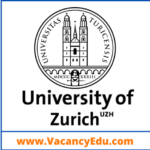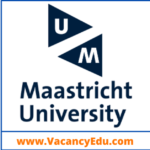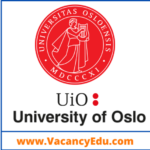University of Southampton, England invites online Application for number of Fully Funded PhD Degree at various Departments. We are providing a list of Fully Funded PhD Programs available at University of Southampton, England.
Eligible candidate may Apply as soon as possible.
(01) PhD Degree – Fully Funded
PhD position summary/title: Development of a miniaturised Plug-and-Play Plasma Instrumentation for Small Satellites – “PLASMACube”
This project aims to develop a real-time in-situ plasma measurement payload for CubeSats. This payload will enable CubeSats to measure the characteristics of their space environment in real time, providing crucial information about interactions that could cause failure and possible ways to mitigate them.
Deadline : 22 Dec 2024
(02) PhD Degree – Fully Funded
PhD position summary/title: Improved understanding of transonic flutter for highspeed aircraft
Are you excited to develop innovative solutions to revolutionize the development of high-speed aircraft? Do you want to work in an environment that encourages you to guide your own career through exposure to a diverse set of novel, open-ended problems working in a multidisciplinary team?
We’re looking for motivated, creative thinkers who can help develop solutions to the toughest challenges in aircraft development today.
This project will explore flutter at transonic speeds and high angles of attack where there is evidence of subcritical limit cycle oscillations (LCO). This is a research in nonlinear aeroelasticity, with a specific focus on transonic aeroelastic flutter.
You’ll work with the Benchmark Supercritical Wing (BSCW) model, tested at NASA’s LaRC Transonic Dynamics Tunnel. You’ll develop advanced computational methods that combine machine learning with physics-based models to analyse aeroelastic instabilities and enhance solution accuracy and speed.
Deadline : 31 Dec 2024
View All Fully Funded PhD Positions Click Here
(03) PhD Degree – Fully Funded
PhD position summary/title: Investigating the fuelling of supermassive black holes using multi-phase gas
Supermassive black holes live in the centre of galaxies and grow by the accretion of gas from their surroundings. This process of black hole growth occurs throughout the evolution of the Universe and powers some of the most spectacular and energetic events we can observe: Active Galactic Nuclei.
Deadline : 17 Jan 2025
(04) PhD Degree – Fully Funded
PhD position summary/title: Finding the unexpected in vast pulsar data sets
In this project, you will push the boundaries of our understanding of extreme neutron star physics, developing your own research ideas and building expertise in AI and large-scale data science. You will apply machine-learning and data science techniques to discover anomalies in vast data sets of radio pulsar observations, and use these to understand how neutron stars evolve over their lifetimes.
Pulsars, which are spinning neutron stars that emit beams of radio waves, are among the most extreme objects in the Universe, but the physics behind their power source remains unknown. To gain a better understanding, our best bet is to find ordinary pulsars that behave in unexpected ways.
You will use over a million radio pulses from a thousand pulsars observed with MeerKAT, the most sensitive radio telescope in the Southern hemisphere. With so many observations to study, You will need to take an AI-centred approach to tackle this influx of information.
Deadline : 17 Jan 2025
(05) PhD Degree – Fully Funded
PhD position summary/title: Transporting microplastic-laden bubbles through vortices (TRAP)
This project aims to understand the viability and benefits of using such large-scale vortices to effectively transport surfactant-laden bubbles in a flow. While bubble-vortex interactions are well documented in various engineering applications, there is a gap in understanding the dynamics of a vortex with no axial flow that can trap a microplastic-coated bubble in its core and transport it to a certain distance.
Deadline : 31 Jan 2025
Polite Follow-Up Email to Professor : When and How You should Write
Click here to know “How to write a Postdoc Job Application or Email”
(06) PhD Degree – Fully Funded
PhD position summary/title: Privacy/Security Risks in Machine/Federated Learning systems
In the wake of growing data privacy concerns and the enactment of the GDPR, Federated Learning (FL) has emerged as a leading privacy-preserving technology in Machine Learning. Despite its advancements, FL systems are not immune to privacy breaches due to the inherent memorisation capabilities of deep learning models. Such vulnerabilities expose FL systems to various privacy attacks, making the study of privacy in distributed settings increasingly complex and vital.
This project explores the dynamics of attack methods, such as Membership Inference and Property Inference, and defensive techniques, like Differential Privacy and Machine Unlearning, in Federated Learning environments. It also identifies potential synergies across disciplines. The project’s outcomes will improve the security, dependability, and trustworthiness of AI applications.
Deadline : 17 Jan 2025
(07) PhD Degree – Fully Funded
PhD position summary/title: Structural biology: A gas channel in vitamin B6 biosynthetic enzymes
Study of gas channels in proteins. You will study gas channeling and structural dynamics in bacterial (tuberculosis), malarial, and plant enzymes involved in Vitamin B6 biosynthesis. Methods learned and applied will be high pressure and time resolved crystallography.
You will join the Structural Biology Groups at the University of Southampton and at the European Synchrotron Radiation Facility in Grenoble (ESRF France).
The High-Pressure Macromolecular Crystallography laboratory at the ESRF will allow you to map gas channels in proteins and study gas transport.
Deadline : 11 Nov 2024
(08) PhD Degree – Fully Funded
PhD position summary/title: Designing Next-Generation Electric Power Systems for Electrified Aircraft Propulsion
Deadline : 2 Jan 2025
Click here to know “How to Write an Effective Cover Letter”
(09) PhD Degree – Fully Funded
PhD position summary/title: AI-assisted robust aero-engine structural analysis due to fan blade-off
Robust design is crucial for ensuring the durability and reliability of aerospace components throughout their entire life cycle, given the variations that arise from geometry, material properties, and loads during long-term operation.
Deadline : 31 Aug 2025
(10) PhD Degree – Fully Funded
PhD position summary/title: Flow and noise control using non-equilibrium turbulent boundary layers
The aim of this research project is to investigate how airfoil self-noise is generated through the interaction between an airfoil blade and the turbulent boundary layers that form over it, and how these structures can be manipulated for flow and noise control.
You will join a team of motivated researchers in our experimental fluid mechanics laboratory, where we use cutting-edge diagnostics to understand the physics of turbulent flows and noise generation. We are part of the National Wind Tunnel Facility and have several wind tunnels and anechoic chambers on site for studying experimental fluid mechanics.
Deadline : 31 Aug 2025
Connect with Us for Latest Job updates
(11) PhD Degree – Fully Funded
PhD position summary/title: Investigation of non-thermal plasma for CO2 conversion in Space In-situ Resource Utilisation
This project will focus on using non-thermal plasma technology to convert CO2 on Mars into oxygen. We aim to push the boundaries of space exploration. Our goal is to develop a novel, compact in-situ resource utilisation (ISRU) system that could revolutionise resource generation for future space missions.
Deadline : 31 Mar 2025
Polite Follow-Up Email to Professor : When and How You should Write
(12) PhD Degree – Fully Funded
PhD position summary/title: Design and optimization of spacecraft trajectories for cislunar transportation and beyond
This PhD project aims to develop techniques and software that can quickly identify low-cost spacecraft trajectories between Earth and the Moon, and also between the Moon and outer space, taking into account mission budgets, specific requirements, and post-failure conditions.
Deadline : 31 Oct 2024
(13) PhD Degree – Fully Funded
PhD position summary/title: Development of an Anthropomorphic Phantom for Personalised Radioimmunotherapy (DAPPER)
This project will build on the team’s expertise in advanced imaging, image-based modeling, and dosimetry to design and manufacture a dosimetry phantom of the lumbar spine that accurately mimics the vertebral bodies. Join our interdisciplinary team and help develop new and innovative ways to improve radioimmunotherapy dosimetry.
Deadline : 31 Oct 2024
(14) PhD Degree – Fully Funded
PhD position summary/title: Replacing Si with 2D materials by developing the technique to dope them
Deadline : 31 Oct 2024
(15) PhD Degree – Fully Funded
PhD position summary/title: Tuned coils and Lenz lenses for NMR/MRI experiments on tissues grown on 3D-printed scaffoldings
Deadline : 31 Oct 2024
(16) PhD Degree – Fully Funded
PhD position summary/title: Transition modelling for improved correlation between wind tunnel tests and CFD
This project aims to improve transition models in computational fluid dynamics (CFD) to achieve better agreement between simulations and scale model wind tunnel experiments. You will work closely with one of the world’s largest aerospace companies to explore relevant problems in the aerospace industry.
Deadline : 31 Dec 2024
(17) PhD Degree – Fully Funded
PhD position summary/title: Uncovering extremely luminous flares from supermassive black holes with next-generation survey telescopes
Modern all-sky astronomical surveys have started detecting unusual, extremely luminous, and long-lived flares in the centres of distant galaxies. These flares are too bright to be caused by the death of a single star and are more likely the result of a violent accretion of material onto a supermassive black hole. This project aims to uncover what that material is and how it gets there, which is key to understanding how black holes grow.
Deadline : 17 Jan 2025
(18) PhD Degree – Fully Funded
PhD position summary/title: Uncovering 12 billion years of supermassive black hole growth
This project aims to answer the questions of how supermassive black holes (SMBHs) grew through cosmic time and how they interacted with the growth of their galaxies.
Deadline :31 Jan 2025
(19) PhD Degree – Fully Funded
PhD position summary/title: High-Redshift Quasars in Next-Generation Spectroscopic Surveys
This project will be observationally driven and you will have proprietary access to two new spectroscopic survey datasets from the 4MOST spectrograph on the ESO VISTA telescope, and the MOONS spectrograph on the Very Large Telescope, which are due to begin observations in 2025.
Deadline : 31 Mar 2025
How to increase Brain Power – Secrets of Brain Unlocked
(20) PhD Degree – Fully Funded
PhD position summary/title: Machine Learning to Build Trustworthy Robot Swarms
This project focuses on advancing the trustworthiness and usability of multi-robot systems, particularly in the context of swarm robotics.
Deadline : 31 Aug 2025
(21) PhD Degree – Fully Funded
PhD position summary/title: Novel Phase Change Materials for integrated photonics
Enabling integrated and free space photonics with advanced reprogrammable materials.
The current increase in data generation is expected to reach unsustainable rates by the end of the decade. This has a strong impact on the environment and therefore new solutions are sought after.
In addition, specific applications such as image recognition and lidar are more efficiently processed in the light domain. Integrated photonics have the inherent ability to support a much larger data density than electronic solutions. Advanced reprogrammable photonic materials enable neuromorphic based computation a key component to efficient artificial intelligence. Our work is to build the most efficient components by developing the next generation of advanced materials to achieve sustainability in AI applications.
Deadline : 31 Aug 2025
(22) PhD Degree – Fully Funded
PhD position summary/title: Skill acquisition in Lifelong Robot Learning with Large Language Models
This project aims to explore how Large Language Models (LLMs) can be harnessed to continuously acquire new skills to solve novel tasks as opposed to mastering a predefined and fixed set of tasks. In particular, methods for incrementally learning skill representations jointly from textual descriptions and spatio-temporal information of action sequences will be developed and evaluated on learning visuomotor robotic tasks in a household environment.
Deadline : 31 Dec 2024
(23) PhD Degree – Fully Funded
PhD position summary/title: High-resolution multi-physics topology optimisation
In this project we aim to develop a technology enabling high-fidelity, high-resolution, robust 3D topology optimisation for multi-physics problems including thermos-fluid and fluid-structure interaction.
Topology optimisation is one of the most powerful engineering design technologies. It is superior to shape and size optimisation as it can theoretically create an optimum object from scratch. There is an ever-growing interest in using topology optimisation in industries for different design problems.
In this project we will extend our in-house aerodynamic topology optimisation code (based on OpenFoam) for multi-physics problems and apply it to a few different test cases, including thermal management system design for electric ground and flight vehicles.
Deadline : 31 Dec 2024
(24) PhD Degree – Fully Funded
PhD position summary/title: Space-Time-Modulated metasurfaces for advanced wave engineering applications
These reconfigurable surfaces modulate their refractive index in time through the spatiotemporal variations of varactors, Josephson junctions, or transistors. We aim to investigate novel methods for dynamic wave control and manipulation, enabling transformative applications in wireless communications, quantum technologies, and beyond.
Join the University’s Smart Electronic Materials and Systems research group. Become part of a fully-funded PhD project that pushes the boundaries of electromagnetic metasurfaces for wave engineering and emphasises strong industrial collaborations and commercialisation potential.
We’re seeking an exceptional candidate to contribute to our groundbreaking project led by Dr. Taravati, who has extensive experience in electromagnetics, active and space-time-modulated metasurfaces and their applications to wireless communications, biomedicine, and quantum computing. He also successfully established a spinout company specialising in active metasurfaces for advanced wave processing in telecommunication systems.
Deadline : 31 Dec 2024
(25) PhD Degree – Fully Funded
PhD position summary/title: Rapid diagnostics for antimicrobial resistance
This PhD project will develop a new sensor technology to diagnose bacterial infections rapidly.
Antimicrobial resistance is expected to become a primary cause of death by 2050, with novel approaches to diagnostics urgently required.
The research will be embedded in a rapid-paced environment combining a start-up, academia, and experimental medicine.
This research is highly interdisciplinary and will merge Engineering, Microbiology and Biophysics to further our understanding of the phenotypic properties of bacteria upon exposure to different treatments and how to exploit these for diagnostics.
Outcomes of this project will contribute to reducing antibiotic misuse and to developing experimental therapies such as phage therapy.
Deadline : 31 Aug 2025
(26) PhD Degree – Fully Funded
PhD position summary/title: Molecular basis and ecological significance of Saccharomyces wine yeast interactions with microbes, plants and insects
Saccharomyces yeast is an outstanding model eukaryote for research and a workhorse of fermentations. We will use advanced techniques in microbiology, genetics, ecology and analytical chemistry to deepen our understanding of yeast’s coevolution and interactions with other organisms, how it benefits from these, and how it could be tailored for various bioprocesses.
This research involving Saccharomyces cerevisiae will train you with skills you can apply to other ‘yeast’ labs or biological systems.
Saccharomyces was the first sequenced eukaryote and comes with many indispensable tools for exploring genetic and subcellular mechanisms. This yeast is also used in the multi-billion-dollar fermentation industries and is found in nature.
Despite its importance, the significance of elements of yeast’s metabolism, its natural ecology and interactions with other microbes, plants and insects isn’t fully understood. For example, yeast produce volatiles that we find pleasing in fermented products such as wine, but this production probably evolved for another purpose, not our benefit.
Deadline : 8 Nov 2024
(27) PhD Degree – Fully Funded
PhD position summary/title: Large area 2D semiconductor platforms
Revolutionising the semiconductor industry with next generation 2D materials and devices.
Moore’s Law is currently being challenged with Nvidia CEO recently claiming it is over. The scaling of transistors cannot continue due to physical limitations of silicon posing a threat to the sustainable evolution of new technologies.
2D semiconductors offer the solution as they can be scaled to the molecular level and create in-memory computing components one of the key elements for neuromorphic computing the hardware that will support the next generation of artificial intelligence.
The project aims to create a revolutionary semiconductor platform using 2D materials to enable electronic, photonic and energy application while unlocking the ultimate limit in miniaturisation of semiconductors. You will benefit from state-of-the-art custom large area 2D equipment not available anywhere else and from one of the most advanced university cleanrooms in the UK.
Deadline : 31 Aug 2025
(28) PhD Degree – Fully Funded
PhD position summary/title: Hidden black holes and the search for self-lensing binaries
Binary systems containing high mass stars evolve through a number of stages, and in many cases can appear as a black hole or neutron star orbiting at a large distance from a ‘normal’ companion star. This is a very long-lived condition which accounts for the vast majority of the millions of binary systems harbouring neutron stars and black holes in our Galaxy. Self-lensing occurs when the binary system is viewed edge-on such that optical light from the companion star is bent towards us and magnified. In the case of microlensing this is a one-off event, whilst self-lensing repeats on the orbital period of the binary.
Deadline : 31 Aug 2025
(29) PhD Degree – Fully Funded
PhD position summary/title: Revealing quasar host galaxies with the Vera C. Rubin Observatory
The goals of the PhD will be to systematically characterise the multi-wavelength properties of quasar host galaxies as a function of redshift, luminosity and dust obscuration using imaging surveys.
The Vera C. Rubin Observatory is a ground-breaking astronomical facility due to start survey operations in 2025. The 10-year Legacy Survey of Space Time (LSST) conducted with Rubin will revolutionise astronomy by mapping the entire Southern sky every few days and generating a petabyte scale dataset containing billions of astronomical sources. Within the rich LSST dataset there will be millions of active galactic nuclei powered by accretion onto supermassive black holes.
- In the local Universe supermassive black hole mass is correlated with the stellar bulge mass of the host galaxy but is this also true at high-redshifts?
- What are the mechanisms by which supermassive black holes and their host galaxies assemble their mass and what role do mergers play in their assembly?
It has been challenging to answer these questions because it is difficult to see the starlight within the host galaxies of rapidly growing black holes or quasars due to the glare of the bright quasar, which outshines the host galaxy by several orders of magnitude.
Deadline : 31 Jan 2025
(30) PhD Degree – Fully Funded
PhD position summary/title: Modelling the role of hard particles in hard facing alloys
This project aims to identify the role and mechanism by which hard phase support galling resistance to support the production of a microstructural model which allows the role of the hard phase to be investigated under a range of operating loads informed by experiments.
Hard facing alloys, such as those used in nuclear power plant, are composite materials comprising carbides (and other hard phases), in galling resistant metallic matrices. Although the issue is local to valves/operating mechanisms the transfer of debris throughout the system including the core results in activation and plating out of these debris in different parts of the nuclear plant.
Deadline : 31 Aug 2025
(31) PhD Degree – Fully Funded
PhD position summary/title: Mathematical modelling of poro-mechanics of soil
All human food supply, ecosystem and infrastructure services depend on soil, yet we have very little understanding of what happens in soil. Soil is one of the most complex and important self-assembling organo-mineral composites in the world. Developing an understanding of soil composition is important, as climate change is likely to alter soil function. We need to find new robust engineering practices and modify existing ones to enable effective soil resource management.
Combinatorial experiments, involving climate effects, are very expensive and time consuming, hence the development of mathematical models to describe soil processes help design more cost effective and powerful experiments. From our research, we have accumulated a body of novel data to describe soil function and are now able to develop new mathematical models for the mechanical and flow behaviour of partly saturated soils.
Deadline : 31 Aug 2025
(32) PhD Degree – Fully Funded
PhD position summary/title: Modelling soil dewatering and recharge for cost-effective and climate resilient infrastructure
In geotechnical infrastructure, it is essential to understand the processes involved in detail, both for controlling groundwater levels and pore pressures during construction, and for potentially managing soil water content to mitigate extreme cycles of seasonal wetting and drying caused by climate change.
There are particular issues that require a better understanding of soil water entry and exit processes, including:
- the depressurisation of relatively low permeability soils, particularly those comprising grains of mixed mineralogy and typical size. What is the effect of applying a vacuum at the soil / well boundary, in terms of additional depressurisation in the soil? How is this distributed within the soil? How would partial or zonal desaturation affect the behaviour?
- the recharge of soils and waste landfills, where clogging of the soil pores by impurities or the movement of fine particles can be an issue.
- Combining the above points, what is the feasibility of controlled water abstraction or injection to mitigate vegetation / climate induced seasonal changes in water content that lead to major shrink/ swell issues with clay embankments in particular. How would this be affected by zones of preferential flow and / or air entry?
Deadline : 31 Aug 2025
(33) PhD Degree – Fully Funded
PhD position summary/title: Building-resolved large-eddy simulations of wind and dispersion over a city scale urban area
This project will investigate across-scale physical processes in urban areas, with a focus ranging from the metre to kilometre scales.
We will develop a computational fluid dynamics tool, using an open source code and the efficient inflow turbulence generation method developed at Southampton, to significantly speed up the numerical simulations, and therefore bridge gaps in protection in urban environments.
We are in a changing world. This includes climate change, fast developing urban environments where most of the population lives. It is crucial that we are able to understand such a complex system, and therefore to build more reliable predictive tools in time, such as for street airflows, temperature hot spots, concentration of pollutants, chemicals and pathogens in urban areas, to mitigate any impact to be resilient.
Deadline : 31 Aug 2025
(34) PhD Degree – Fully Funded
PhD position summary/title: Investigation of neutraliser-free air-breathing plasma thruster
This project will investigate how adding metal plasma can improve the performance of air-breathing plasma thrusters, with a focus on developing an optimized neutralizer-free design for Very Low Earth Orbit environments.
Very Low Earth Orbit (VLEO), which includes altitudes below 100 kilometres, is gaining popularity due to its potential for space missions and its role in promoting sustainability by rapidly clearing space debris. This rapid orbit decay aligns with the European Space Agency’s (ESA) goal of a zero-debris future. However, operating efficiently at these low altitudes poses significant challenges, particularly overcoming the drag caused by the spacecraft’s interaction with the atmosphere.
Traditional electric propulsion (EP) systems, such as Hall thrusters, ion thrusters, and magnetoplasmadynamic (MPD) thrusters, are designed to operate in a vacuum and are limited by the size of their propellant tanks. In contrast, air-breathing plasma thrusters utilize the sparse atmosphere as a propellant, removing the need for heavy tanks. These innovative thrusters generate plasma from atmospheric air and use electric and magnetic forces to create thrust.
Deadline : 31 Mar 2025
(35) PhD Degree – Fully Funded
PhD position summary/title: Aerodynamic interaction between next generation aircraft engines and wings
A PhD studentship is now available in the area of aircraft aerodynamics and aeroacoustics (aerodynamically generated noise). The studentship provides a unique opportunity to work on a relevant engineering problem at the Airbus Noise Technology Centre (ANTC), part of the Faculty of Engineering and Physical Sciences at the University of Southampton.
The primary goal of this PhD work is to understand the impact of the next generation of aircraft engines on the performance of the wing high-lift devices, i.e. the leading edge slat, trailing edge flaps and spoilers.
There are several candidates for the next generation of aircraft engines in order to reduce the environmental impact of air travel. One such candidate is an open rotor engine (e.g. the CFM International RISE programme). This engine is planned to support both hydrogen and sustainable aviation fuels. There is an aerodynamic and aeroacoustic impact of such an engine on the wing that is not currently fully understood due to the interaction with wake of the rotor. This is the topic that is investigated in this PhD using a combination of wind tunnel tests, numerical simulations and analytical methods.
Deadline : 31 Dec 2024
(36) PhD Degree – Fully Funded
PhD position summary/title: The association between hearing and cognition
Dementia impairs cognitive ability and currently affects 55 million people worldwide. Hearing loss is the number one modifiable risk factor for dementia. The underlying mechanisms of the well-established association between hearing loss and cognitive decline remain unclear.
The confounding effects of hearing loss with aging are partly responsible for that. Moreover, Tinnitus (ringing in the ear) is often presumed to impair cognition, largely due to the high association between hearing loss and tinnitus. In a recent study, we identified that tinnitus in age-related hearing loss is associated with better cognitive performance.
In the first part of this project, we aim to further assess the interaction of tinnitus with cognition in age-related hearing loss in a large population exploring potential factors that modify the association.
In the second part of the project, we will focus on a potential auditory electrophysiological biomarker of dementia (features extracted from the electroencephalogram [EEG] of the patients). The biomarker has been tested in a large diverse population.
Deadline : 31 Oct 2024
(37) PhD Degree – Fully Funded
PhD position summary/title: Formal verification of AI interfaces
The field of computing is facing a conundrum caused by a clash in two opposing trends: on the one hand, the growth and proliferation of machine learning (ML) in software, and on the other hand, ever-growing concerns that, with ML models being a black-box technology, the safety, security and explainability of software that uses ML diminish.
The field of computing is facing a conundrum caused by a clash in two opposing trends: on the one hand, the growth and proliferation of machine learning (ML) in software, and on the other hand, ever-growing concerns that, with ML models being a black-box technology, the safety, security and explainability of software that uses ML diminish.
To address these concerns, we need tools and languages that can serve as safe interfaces to ML components. Such safe ML interfaces will allow to specify the desired properties of ML models, train ML models to satisfy such properties, and verify that these desired properties do in fact hold in the final artifact. For example, one language that supports the safe ML interfaces approach is the Haskell DSL Vehicle [1]; and one iconic application for safe ML interfaces is in verifying autonomous car controllers [1].
Deadline : 31 Dec 2024
(38) PhD Degree – Fully Funded
PhD position summary/title: AI-enhanced fluid-structure modelling to aid maritime decarbonization
This project centres on innovative numerical schemes based on the lattice Boltzmann method (LBM). By going beyond the conventional Navier-Stokes framework, the LBM shows its strengths in adeptly managing complex boundary conditions and leverages the power of parallel computing. It provides a powerful platform for addressing the fluid-structure modelling challenges within this field. In addition, AI technology will play a crucial role as a supportive tool, contributing to more efficient and accurate turbulence modelling.
Deadline : 16 Dec 2024
About University of Southampton, England – Official Website
The University of Southampton (abbreviated as Soton in post-nominal letters) is a public research university in Southampton, England. Southampton is a founding member of the Russell Group of research-intensive universities in the United Kingdom, and ranked in the top 100 universities in the world.
The university has seven campuses. The main campus is located in the Highfield area of Southampton and is supplemented by four other campuses within the city: Avenue Campus housing the School of Humanities, the National Oceanography Centre housing courses in Ocean and Earth Sciences, Southampton General Hospital offering courses in Medicine and Health Sciences, and Boldrewood Campus housing an engineering and maritime technology campus and Lloyd’s Register. In addition, the university operates a School of Art based in nearby Winchester and an international branch in Malaysia offering courses in Engineering. Each campus is equipped with its own library facilities. The annual income of the institution for 2021–22 was £666.8 million of which £114 million was from research grants and contracts, with an expenditure of £733.7 million.
Disclaimer: We try to ensure that the information we post on VacancyEdu.com is accurate. However, despite our best efforts, some of the content may contain errors. You can trust us, but please conduct your own checks too.
Related Posts
- 05 PhD Degree-Fully Funded at University of Bergen, Bergen, Norway

- 23 PhD Degree-Fully Funded at University of Zurich, Switzerland

- 11 PhD Degree-Fully Funded at Swansea University, Wales, United Kingdom

- 10 PhD Degree-Fully Funded at Maastricht University, Netherlands

- 18 PhD Degree-Fully Funded at University of Groningen, Netherlands

- 10 PhD Degree-Fully Funded at University of Oslo, Norway

- 26 PhD Degree-Fully Funded at Delft University of Technology (TU Delft), Netherlands

- 26 PhD Degree-Fully Funded at University of Dundee, Scotland, United Kingdom

- 05 PhD Degree-Fully Funded at Utrecht University, Netherlands











